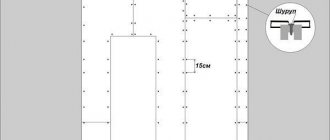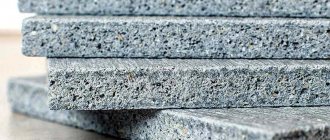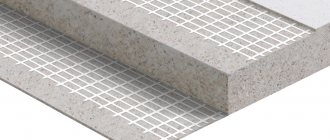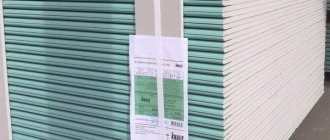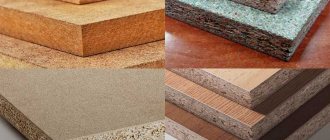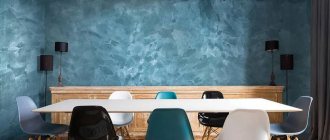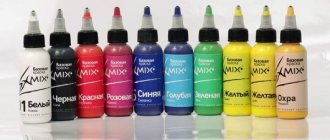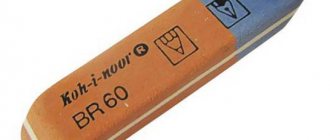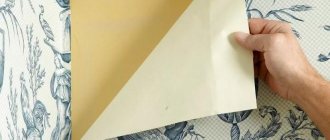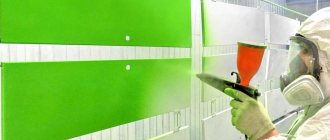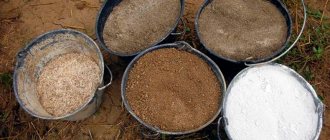Material characteristics
Drywall must withstand the minimum permissible loads. The main supplier of drywall is Knauf. The sheets can withstand loads of 730 N. The weight of one sheet is 29 kg. Fire resistance of drywall is 20 min.
Knauf has developed products for interior decoration with fire protection.
Knauf panels in stock Source alicdn.com
Knauf FIRELINE has released a line of materials that include:
- raw panels;
- coated sheets.
The material has acoustic properties such as reflection, absorption, vibration. Fire-resistant products contain the following components:
- drywall;
- decorative surface (veneer, varnish, laminate);
- substructure.
What is the difference between GKL and GVL?
Let's look at regular gypsum plasterboard, what it is, and how it differs from gypsum plasterboard. Drywall consists of gypsum with additives and cardboard lining. Depending on the area of application, the material has different composition and properties. For visual distinction, products are painted and marked. There are the following types of drywall:
- GKL.
- GKLV.
- GKLO.
- GKLVO.
GKL can be wall or ceiling. GKLO is a fire-resistant material that contains reinforcing additives. Sheets are used only in dry rooms. The color of the cardboard marking is red.
GKLV is a moisture-resistant material that is impregnated with hydrophobic and antibacterial compounds. Water-repellent compounds have been added to the gypsum layer, so it is used in rooms with high humidity. The cardboard is green and the markings are blue.
GKLVO sheets are moisture and fire resistant. The product combines the properties of GKLO and GKLV, adding hydrophobic components.
The color of the sheets is green, the markings are red Source srbu.ru
GVL has a density of 1250 kg/mᶟ. The panels are made from gypsum, reinforced cellulose and additives. GVL Knauf differs from drywall:
- strength;
- frost resistance;
- absorption of excess moisture;
- creates a healthy microclimate.
See also: Catalog of companies that specialize in finishing materials and related work.
Advantages and disadvantages
Let's see what advantages gypsum fiber sheet has:
- Due to the equal distribution of cellulose, the material, in comparison with gypsum board, is very strong.
- GVLV sheets are fireproof; they do not burn in a fire, unlike plasterboard, the sheets of which crumble when the outer layers burn.
- Installation does not cause any difficulties.
- Gypsum fiber is used in any room, as it has excellent moisture resistance.
- Does not allow excess noise to enter the apartment.
- The material is so durable that it will not crumble if nails are driven into it and screws are screwed in; you can use ordinary tools to work with it.
- Can withstand significant sub-zero temperatures (freezing and thawing are 15 cycles, while drywall can only withstand 4 cycles).
- It harmonizes perfectly with various finishing materials.
Such sheets have a lot of advantages.
Of course, gypsum fiber has a lot of advantages, now let’s look at its disadvantages.
- In terms of weight, GVLV sheets are much heavier than drywall, as they are denser.
- High price equivalent.
- They cannot be used for structures where it is necessary to bend the material, because gypsum fiber is not flexible.
GVLV sheets are easy to install
Moisture-resistant GVL and GVLV
GVL and GVLV can be used in rooms with a humidity of 60%. GVL is a dense material made from gypsum and fluffed cellulose fibers. GVL panels are low-flammable materials of class G1. The products are used in fire-resistant structures. Panels can have straight (PC) and folded (FC) edges.
GVLV can be used in unheated rooms. The panels are treated with a water repellent. GVLV material weighs 32-44 kg. Main characteristics of sheets:
- ultimate bending strength – 6.0 – 5.5 MPa;
- humidity – less than 1%;
- vapor permeability;
- low thermal conductivity;
- hardness – more than 20 MPa.
The use of gypsum fiber panels allows you to reduce finishing work. GVL and GVLV Knauf slabs are used to insulate the floors, walls of rooms, attics, verandas, and attics.
Among the advantages of the material:
- sound insulation, fire resistance;
- reliability of the panels (withstand heavy objects);
- water resistance;
- does not emit harmful substances.
To better understand what GVL is, you should know the panel manufacturing process.
Waterproofing GVL with oil paint?
The letter was written: GVL - “extracted” ((r) Zadornov), it seems to be moisture resistant, but just in case of emergency, I want to increase the WATER RESISTANCE first of all of its internal surfaces. Well, so that if suddenly, someday a pipe breaks and starts leaking, so that my GVL doesn’t leak either...
Be sure to remember to make an inspection hatch in the box, or even better, make the front wall of the box removable. Then if, God forbid, your riser suddenly splashes, then you simply remove the wall, the plumbers will fix it for you and you will simply dry the wall. I myself had the opportunity to verify the convenience of the solution, since access to communications should always be available.
Letter wrote: Question: is it possible, without chasing exotic impregnations-primers, to simply paint the internal and end surfaces of the gypsum fiber board with oil paint or enamel? There seems to be no doubt about its WATER resistance... And the “face” is priming and gluing the tiles...
Let's think logically, and not rely on intuition as women do, and also use irresponsible approvals from people like taksa or Mals. Enamel or paint can close the pores well, but again this depends on the characteristics of the paint (competent painters will explain this to you better), in particular the size of the particles. Yes, you can add more solvent and coat in several layers to close more pores and “channels” in the gypsum plasterboard, but why? I personally have great doubts about the crack resistance of enamel or oil paint over gypsum plasterboard. A crack forms, which means there is a passage for water. The following options will be more practical: 1) protecting the gypsum fiber board with high-quality elastic waterproofing mastic such as KNAUF Flechendicht or FEIDAL Flechendicht-Acrylic, but as I understand, these materials are not available at your place of residence. Quite similar in properties are domestic bitumen mastics for interior work with the addition of rubber, which gives them elasticity. Try looking not in construction markets, but in stores or companies selling building materials. Take your local company catalogs, pick up the phone and go ahead..... 2) Cover the inside of the box with GVL with plastic or rolled waterproofing material like hydroglass insulation. Sheets of plastic can be glued, and thin rolled materials can be stapled to the GVL. I've done this myself more than once. Option No. 1 is extremely simple - apply it with a brush or roller in 2 layers, throw it away and throw the roller away, but the price of KNAUF mastic in Moscow is around 900 rubles for a 6 kg bucket. Option No. 2 is also quite simple, but you need plastic or rolled waterproofing material, and in construction markets it is either sold in rolls of 50 linear meters at once, or a piece will cost you three times more. It is also desirable that plastic does not emit any crap, so you should not drag something similar to plastic from the nearest trash heap or industrial area.
Letter wrote: Will such painting damage the structure and composition of the gypsum fiber board?
Paint will not harm, GVL can be painted, dark paints and universal enamels can be applied to GVL, but you don’t need this for waterproofing.
Video description
For a clear overview of the production of drywall, watch this video:
Sheet manufacturing process
Drywall is produced using injection molding technology. Along the conveyor there is a strip of cardboard onto which a liquid binder is poured. The top is rolled into a sheet of cardboard and rolled out. Then, once the binder has set, the material is cut to size using a guillotine. Next, the product goes to drying.
Gypsum fiber material is made by semi-dry pressing. A 5–7 cm layer of binder with cellulose is poured onto the molding table. All this is pressed to a thickness of 12 mm. After the press, a hard surface is obtained, which goes into drying.
GVL production line Source prom.st
Features of working with moisture-resistant drywall
GVL is suitable for work in rooms with aggressive environments:
- kitchens;
- bathrooms;
- showers;
- swimming pools.
The joints and edges of the panels are treated with moisture-proof compounds. Impregnation is carried out before finishing so that moisture does not get inside the material.
Making the frame Source izgipsokartona.com
Installation work begins with the manufacture of a frame, for which metal profiles are used.
Let's look at the GVL sheet and what it is for the kitchen and bathroom. Knauf offers decor and design options that are specially designed for wet use. Complete Knauf Dry Construction systems for interior finishing are recognized as advanced.
How to paint drywall yourself
Well, we got to the actual painting. Painting drywall is not as difficult as installing and preparing it, but it also has its own subtleties and nuances. Again, I suggest → ordering painting work (via the link, again in Moscow) in order to make your life easier. Painting work also includes sealing plasterboard joints, so you can order as a whole, a partition or ceiling, or leveling gypsum plasterboard walls for painting.
If you have decided on all this and think that the installation of drywall was carried out correctly, the joints are sealed correctly, let's start painting it.
What paint to use
Almost any water-based paint can be used. The main thing is that the label says that you can paint the walls and ceiling. These can be acrylic, latex and other paints. But only water-based! There is no need to use any smelly enamels for drywall; that is not what they are intended for in the age of water-based paints.
Application of panels in construction
Laying gypsum fiber board on the floor
Installation of a “dry” slab floor is quick and simple.
Work order:
- Cover with waterproofing.
- Apply edge tape around the perimeter of the room.
- Lay a layer of expanded clay with a fraction of no more than 0.5 cm.
- Installation of the 1st layer begins from the wall opposite the door.
- The laid row on top is covered with glue, and the 2nd row is covered.
- Seal the joints.
- Lay the finished floor.
If the GVL is 1200x1500 in size, use the bricklaying method.
Attention! The second row is laid out carefully so as not to displace the bottom layer.
Builders call the technology waste-free; the trimmings are transferred to the next row. GVL is connected depending on the size. All products are glued. Large formats are secured with screws over the entire area every 30 cm, small ones - every 20 cm.
Small sizes are suitable for household purposes, since large products are inconvenient to work with.
Laying gypsum fiber board on the floor Source rovpol.ru
Scope of application of gypsum fiber
Gypsum fiber sheets can be used almost everywhere: to finish surfaces, build interior partitions and walls. If you are going to do renovations in the kitchen, bathroom or shower room, it is better to take moisture-resistant GVL - GVLV. Because the material has fire-fighting properties, it is used for load-bearing structures, and cable channels can be laid behind it. It is especially suitable for those premises where fire safety rules must be strictly observed.
GVLV sheets can be used for any purpose
The fact that gypsum fiber is an environmentally friendly material, without any risk to health, it can be used for children's rooms, bedrooms, laid on the floor, and finished on the ceiling. Suitable material as a rough floor covering and as an element of a dry screed. This method is very important when you need to equip the floor in a short time.
Gypsum fiber is an environmentally friendly material
